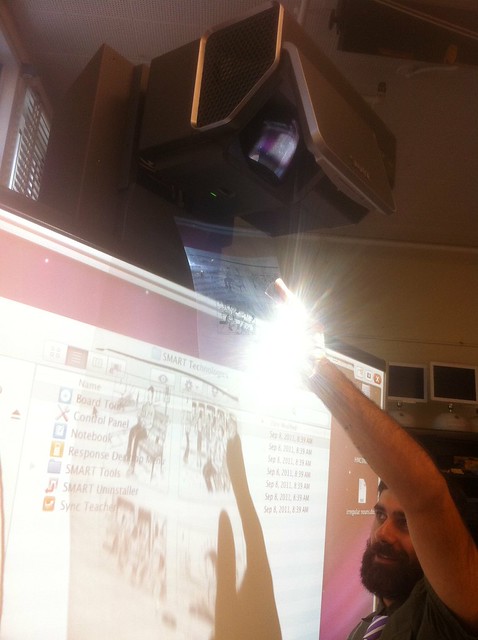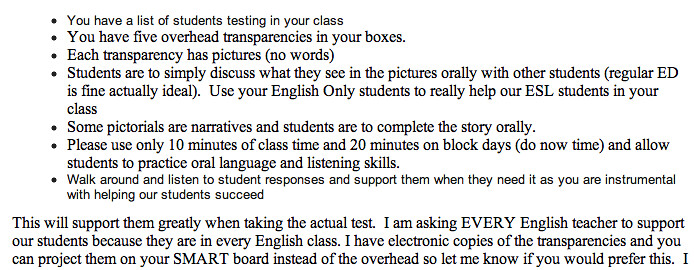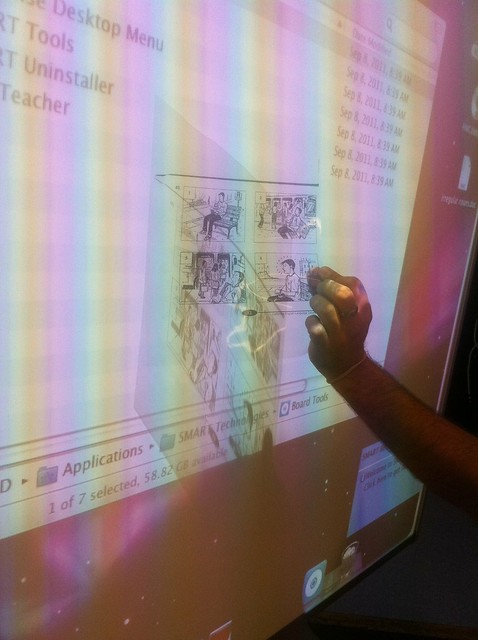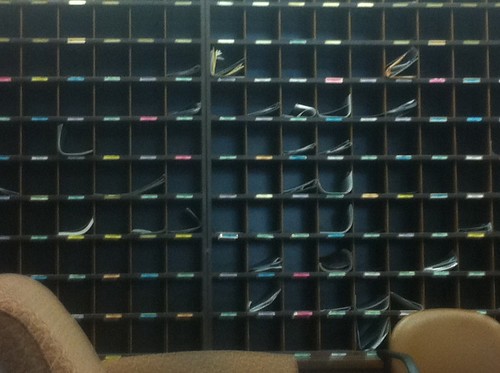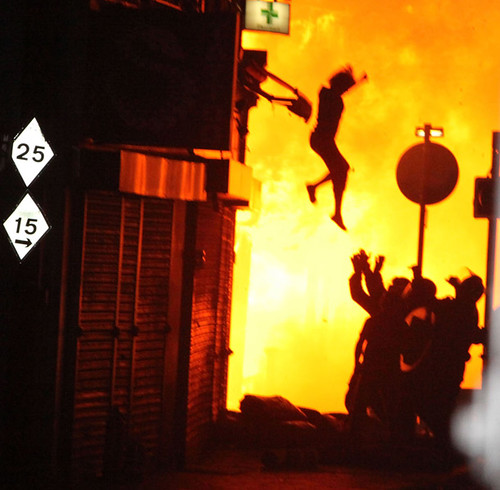Particularly, I am hoping to see a larger cadre of teachers and students present at this year’s conference. If you are a teacher, student, or researcher working around the role of digital innovation in public education, please consider submitting a proposal to present. As noted below, proposals are due October 19th through Fastapps.
CALL FOR PROPOSALS
BEYOND EDUCATIONAL TECHNOLOGY: LEARNING INNOVATIONS IN A CONNECTED WORLD
Digital Media and Learning Conference Website: http://dml2012.dmlcentral.net/
San Francisco, California March 1-3, 2012
Conference Chair:
Diana Rhoten (News Corp.)
Conference Committee:
Tracy Fullerton (USC) Antero Garcia (UCLA) Mitch Resnick (MIT) Mark Surman (Mozilla Foundation)
Technology will revolutionize education. That was the shout heard around the world as early as the 1970s when “microcomputers” first appeared on the scene. In the last forty years, the exponentially increasing powers and dramatically decreasing costs of computer technologies have surpassed even the wildest dreams of those early days. Yet, there is still little evidence of any major technology-enabled disruptions to the structure and culture of mainstream education. Today, technology has once again become the rallying call for education innovation. Whether as efforts to establish new institutions, experiment with mobile devices, develop learning applications, or incorporate personalized and distance education platforms, information technologies and digital media are at the center of the education innovation conversation.
In 20th Century United States, schools were seen as the primary locus of education, where teachers are transmitters and students are receivers of information and knowledge. As a result, education reform movements focused on promoting school-based practices and processes that would maximize institutional efficiencies. In that context, the then emerging “education technology” community (as it has since come to be known) drew from the “best practice” of their time and focused mainly on the development of instructional hardware to increase standardized test scores, administrative technology tofacilitate record keeping, or content management systems to deliver traditional curriculum online.
More recently, however, cutting-edge research from the social and behavioral sciences has begun to show that an individual’s learning can be accelerated by tapping into personal interests that span different social experiences including but beyond schooling. Evidence also suggests that individuals may learn more efficaciously and more equitably, without gaps between rich and poor, when they learn in specialty domains and practice areas that they choose and for which they are motivated. Compared to older education paradigms, this 21st Century pedagogical view reframes learning as the creation and acquisition of knowledge through observing, interacting and collaborating with others anywhere, anytime. As a result, we are now seeing new technologies and digital media designed not to deliver a faster, cheaper schooling but rather to enable richer, deeper learning. As this new “digital media and learning” movement (as it is becoming known) expands, we are seeing the emergence of Web-enabled, mobile-based platforms that promote new models of peer-to-peer learning, anywhere / anytime learning, blended learning and game-based learning.
The “education technology” and “digital media and learning” views on education innovation represent differences in thinking not just about technologies for but also – more importantly – pedagogies and epistemologies of learning. While there are fundamental differences between these perspectives, we do not think these two visions need be or should be in conflict with one another. In fact, we believe they are complements to one another, with critical and necessary synergies between their approaches. For example, there is great evidence to suggest that “basic skills” and “core competencies” may be best learned in classroom environments but then augmented and advanced with the type of independent, interactive learner-centered experiences that new technologies can provide outside of the classroom. Building a new future for education and learning in a connected world not only allows but actually requires bridging in-school and out-of-school learning practices and philosophies through networks of learning institutions and alliances.
Inspired by Silicon Valley’s culture of technology-led innovation, the 2012 Digital Media and Learning Conference will explore ongoing questions and debates around the role of technology and the future of education and learning.
• What are the primary purposes and practices of education, and how can technology accelerate or decelerate them?
• When we talk about disruptive technologies, what systems and players are we really seeking to change and to what end?
• What sectors, institutions and populations are we mobilizing for innovation and for whom are we mobilizing them?
• How do we design, build and fund infrastructures around new connections across and configurations of learning?
• How do we cultivate a healthy, symbiotic ecosystem of innovation that leads to a future of Connected Learning?
In answering these and other questions, we hope attendees will challenge their assumptions and share their visions about what education and learning could or should look like in a connected world. To that end, we invite provocative sessions that address the intersections and tensions inherent in different approaches to innovation, and we strongly encourage interactive discussions that push panelists and participants alike to ask themselves where they are in the innovation conversation and how they plan to translate that conversation into action.
ABOUT THE WORKSHOP, PAPER AND PANEL PROPOSALS
We welcome workshops, panels and papers along five themes: Making, Tinkering and Remixing; Re-imagining Media for Learning; Democratizing Learning Innovation; Innovations for Public Education and Digital Media and Learning.
Making, Tinkering and Remixing. To become full and active participants in 21st century society, young people must learn to design, create, and invent with new technologies, not simply interact with them. What are the pathways for becoming a maker and not just a user in a world of Connected Learning? What social and technical infrastructures provide the best support for young people as they learn to tinker with materials, remix one another’s work, and iteratively refine their creations?
Re-imagining Media for Learning. What does it mean to think of media and games in the service of diverse educational goals and within a broad ecology of learning? In particular, how can we balance the needs of multi-stakeholder alliances against the challenges of designing engaging, playful and truly innovative media experiences? Especially those that go beyond implementations of technologies and platforms to create real communities of playful learning and rich opportunities for individual discovery and growth.
Democratizing Learning Innovation. Looking to the groundswell for massively collaborative innovation and change, what does it take to pull from a participatory and networked ecology to push innovation from the bottom up and from the outside in versus top down and inside out?
Innovations for Public Education. Too often cutting edge technology innovations serve the interests of the already privileged “creative class.” What can we do to ensure that the most innovative forms of learning are accessible to all educators and young people relying on public education infrastructures? How can digital innovation directly impact disparities in achievement of students based on race and class?
Digital Media and Learning: We also welcome submissions that address innovative research and practice in the field of digital media and learning.
Presentation Formats
This year we will be accepting proposals in three formats: panels, workshops and short talks.
Panels bring together in discussion four participants or presentations representing a range of ideas and projects. Panels are scheduled for 90 minutes and should include a mix of individuals working in areas of research, theory, and practice. We also encourage the use of discussants.
Workshops provide an opportunity for hands-on exploration and/or problem solving. They can be organized around a core challenge that participants come together to work on or around a tool, platform, or concept. Workshops are scheduled for 90 minutes and should be highly participatory.
Finally, we welcome short, ten minute talks where presenters speak for ten minutes on their work, research or a subject relevant to the conference theme and/or subthemes.
Note: Proposals for ignite sessions will be announced in January 2012.
Submitting Your Proposal
The DML2012 Conference proposal system is now open and full proposals will be due on October 19, 2011 (11:59 pm PST). To propose a panel, participants will be required to register with Fastapps http:// fastapps.dmlcentral.org, our submission system at the Digital Media and Learning Research Hub. Participants will be able to edit their proposals up until the final deadline.
Panel and Workshop proposal abstracts should cover the theme, format (e.g. discussion, interactive, presentations), how the session addresses the theme of the conference and/or subtheme in up to 500 words. Short talk abstracts should cover the theme, format (e.g. discussion, interactive, presentations), how the talk addresses the theme of the conference and/or subtheme in up to 250 words. List of participants, affiliations, emails and titles of talks/presentations (if applicable) should also be included. We will not be soliciting full papers or publishing conference proceedings.
Please note that each participant will be limited to participation on no more than two panels at the conference. Participants will be expected to fund their own travel and accommodation.

